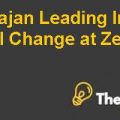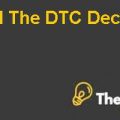Mitel Semiconductor Case Study Solution
Convert Bromont to Larger Wafer
Another alternative is to convert the Bromont to the wafers with different sizes such as 150 mm, 200 mm, or 300 mm. The option provides the value added advantage through allowing the division to convert to the smaller size width for moderately low cost due to the reason that they already make certain changes in the production equipment and install advanced clean rooms.
Although, the conversion to wafers with 300 mm size would increase the production capacity to 112,000 but it posit high price challenges to the company. Additionally, the conversion to the wafer with 200 mm size would have potential for capacity enhancement but Kirk has been confronted with the issue of critical supply due to the fact that many other 200 mm FABs has been under construction. Next to conversion to 150 mm wafers cost about $35 to $40 million and it requires two year of time to be accomplished without a plant shut down.
Contract Out Fabrication
The deal with the supplier requires no investment but increase the cost to $600 / wafer. The fixed cost would be rising by $1 million due to the requirement of additional engineers to manage suppliers. The option also require large up-front payment for securing supply and the additional cost per wafer would significantly lower the gross margin of the company.
Secure External Capacity through Acquisition
Lastly, the company is presented with option of acquiring new chip maker. Obviously, the acquisition would be tough method and cost a huge amount of money but provides security of supply for the customers. Moreover, the acquisition would bring up to $48000 wafers with little changes in the production in approximately 12 month.
Analysis of Alternatives
Status Quo
Pros
- The maintenance of the status quo could be done in 8 months without plant shut down.
- The annual 100 mm capacity would be increased by 44,800.
- The company can sustain the profitability and remain competitive in the market for near future.
Cons
- The option would not be suitable for meeting the increased demand for the longer period of time.
- The company need to find the alternative supplier for 100 mm wafer and develop in-house wafer growing capability the cost of which amounted $40 to $50 million.
Convert Bromont to Larger Wafer
Pros
- The conversion of Bromont to any size of wafer provides advantage of enabling division to change to smaller line width for low cost.
- The capacity would be augmented to 112,000 wafers.
- The useful life of the equipment would be substantially extended in case of larger wafers.
- The conversion to 150 mm wafer requires low upfront cost amounted to $35 to $40 million without plant shutdown and it could be accomplished within 2 years of time.
Cons
- The longer period of 4 years is required in case of 200 mm plant.
- There would be a critical situation of supply, because of the reason that there are so many other 200 mm FABs has been under construction.
- The project requires increased upfront cost and investment; $150 and $250 million is required for 200 mm and 300 mm respectively.
Contract Out Fabrication
Pros
- It would increase the wafer capacity with considerably no upfront cost.
Cons
- The cost per wafer would be increased to $600, which in turn would reduce the gross margin of the company.
- The fixed cost would be increased on annual basis by $1 million due to the need of additional engineer managing the suppliers.
Secure External Capacity through Acquisition
Pros
- The products of the acquired plants could be easily incorporated into the product line of Mitel Corporation
- The production capacity would rise to 48,000 wafers with the cost of purchasing amounted to $45 to $50 million.
Cons
- It would be difficult for the company to change the orientation of the research & development (R&D) to one of the production
- There would be no capacity relief for the Bromont until and unless the capacity reach beyond 20,000 wafers.
Recommendation
After evaluating the pros and cons of each alternative with respect to address the emerging issue within an organization, the company should go with the combined options of Converting Bromont to Larger Wafer and Securing External Capacity through Acquisition. By doing so, the company would be able to increase the production capacity to 112000 wafers and overcome the issue of 100 mm wafers unavailability of suppliers and extend the equipment useful life. The cost of acquisition would be easily funded by using cash and cash equivalents.
The company should make new human resource strategy with the considerable attempt to the company’s culture to adopt both production and R&D cultures. Furthermore, the company should be partnered with major producer of telecom and leverage the share of direct customer sales. The company can take debt to fund huge upfront cost for 200 mm wafers and make the use of the low debt to equity ratio which is calculated for both years 1994 and 1995 (Mimick, 2015).
Conclusion
The Mitel Corporation was founded in 1971 by the combined efforts of two Canadian founding members and high-tech innovators Terry Matthews and Michael Cowpland. To address the problem of reduced production capacity, the company should go with the converting Bromont to Larger Wafer and Securing External Capacity through Acquisition. By doing so, the company would be able to increase the production capacity to 112000 wafers and overcome the issue of 100 mm wafers unavailability of suppliers and extend the equipment useful life. The cost of acquisition would be easily funded by using cash and cash equivalents.
Appendix A – Financial ratios
| Financial ratios | ||
| 1994 | 1995 | |
| Debt to equity ratio | 0.131178707 | 0.119982736 |
| Return on equity | 0.089339663 | 0.120912548 |
| Gross profit margin ratio | 0.45004029 | 0.459918478 |
| Return on assets | 0.054994687 | 0.072437358 |
Appendix B – Porter five forces model
| Porter’s Five Forces | ||||
| Threat of New Entrants | Bargaining Power of Supplier | Bargaining Power of Buyer | Threat of Substitutes | Rivalry among Existing Competitors |
| Low | High | Moderate | Moderate | Intense |
| High capital investment
Fixed cost Intense competitive rivalry |
Specific size of wafer | Niche market
Expansion to developing markets |
Few substitutes
High switching cost |
Large players
Economies of scale Standardization
|
Appendix C – SWOT analysis
| Strengths | Weaknesses |
| Comes under world’s largest five companies
Strong R&D Cheap and reliable products |
Specific wafer size
Third party contractor’s dependency Highly affected by competition |
| Opportunities | Threats |
| Increased demand
Mergers and acquisition Maintaining the status quo Different wafer size Contract out fabrication
|
Government policies and regulation
Intense competition
|
This is just a sample partical work. Please place the order on the website to get your own originally done case solution.
How We Work?
Just email us your case materials and instructions to order@thecasesolutions.com and confirm your order by making the payment here











